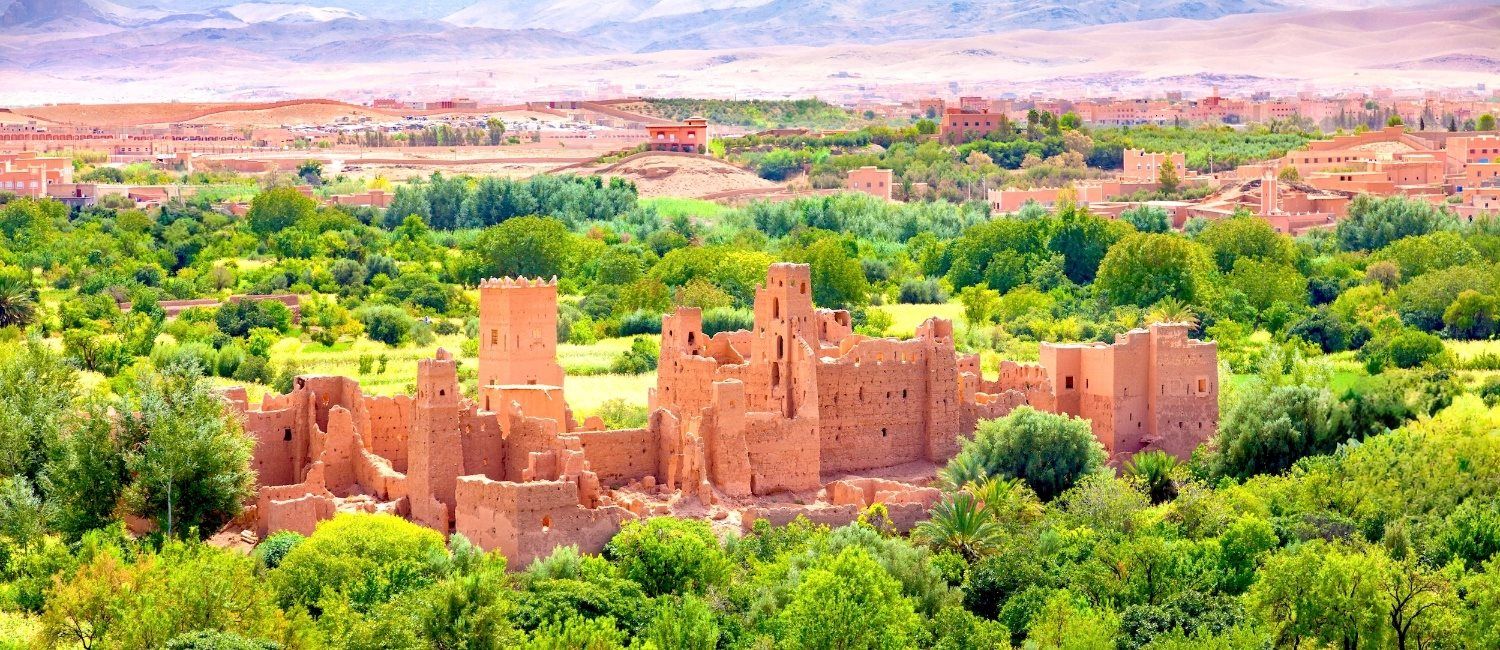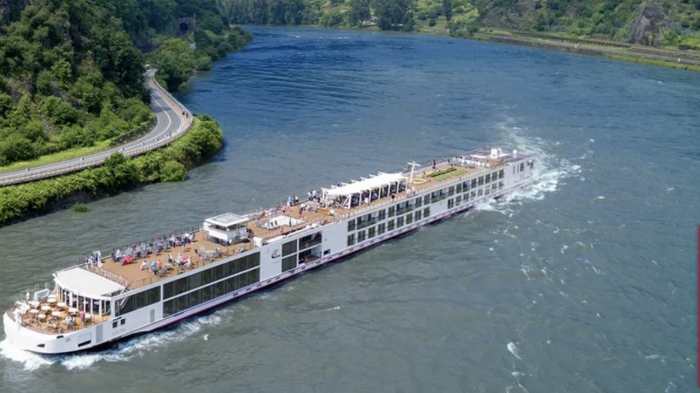Discovering Ecuador’s Less-Traveled Backcountry
I was at the cruising altitude of a Cessna, inching down the steepest canyon of my life. Waist-tall thorny brush, wildflowers and gnarled polylepis shrubs surrounded me in a rare, high-altitude wetland ecosystem called a paramo, which only exists in Ecuador and in neighboring Bolivia. Each step required exertion because my body hadn’t adjusted yet to hiking at 13,123 feet. I was grabbing onto branches to steady myself for the roughly 45-degree descent, so I wouldn’t twist an ankle. Then the ground leveled, and I collapsed onto tufted grass shaped like a camel’s hump, panting hard, dizzy, and satisfied as Andres, a guide from Surtrek, poured tea from a thermos and pointed to a lone condor overhead. So much for his cheery prediction of a “low-impact couple of hours.”
Ecuador is one of the fast-growing, most popular destinations in South America, says the luxury travel agency network Virtuoso. And while most travelers still head for the Galapagos Islands first, increasing numbers of “soft adventurers” like me are venturing into Ecuador’s less-touristy backcountry for the many opportunities there to go rafting, hiking, horseback-riding, mountain-biking, birding and more.

The logistics of a land trip are a breeze. Ecuador's currency is the US dollar, electrical outlets are North American and the nationwide network of highways is well-maintained, with only a few off-road challenges in rural areas. The country is just over half the size of California, yet contains every one of Latin America’s diverse ecosystems; this means that in a couple of hours or less, you can drive from one completely different landscape to the next, and each is a launch-pad for various outdoor adventures. I didn’t know what to expect before going to Ecuador, but it wasn’t this.
The Equator cuts slightly north of Quito—the world’s highest capital at 9,350 feet—and the combination of high elevation plus the sun’s rays beaming down pretty much vertically, hit me hard. At the first stop, Casa de Hacienda La Jimenita, a farmstead inn and restaurant by the airport, perfectly-seared steak a la plancha came with a history lesson, as owner Diego Cruz showed off his tray of 10,000- to 30,000-year-old artifacts – everything from obsidian tools to petrified human bones collected around the family’s 18 acres. Outside, hummingbirds buzzed at feeders surrounding the main house, as Diego led me to a trail cut millennia ago by the area’s original Quitu tribes. He showed me where he'd found a Clovis-style arrowhead. A little further on, he pointed out remnants of an aqueduct, and the barely-visible attachment points of a several-thousand-year-old bridge over a river canyon.

At a tunnel where his sons used to play hide-and-seek, we paused, and began climbing stairs in pitch darkness, running our fingers over the striation marks from tools held by prehistoric hands. The tunnel was used for centuries before Peruvian Inca warriors invaded Ecuador in the late 1400s, and for centuries after Spanish conquistadors routed the Inca in 1534. It was still in use in the 19th century, as a weapons cache during Ecuador’s struggle for independence from Spain (achieved in 1822).
The next day, driving higher and higher into the mountains surrounding Quito, I spent the morning visiting a rose farm, acclimatizing a bit. Next was that high-altitude hike through the paramo. And by evening, I was relaxing in hot-springs pools that bubbled up beside the cottage-style suites at Termas de Papallacta Spa, sipping pisco sours, and regaling fellow guests with tall tales of the adventures thus far. I was like a modern-day Francisco de Orellana: blazing a similar trail over the Andes, and through Papallacta, as Orellana did in 1542, on his way to discover the Amazon.

Meandering back down the Andean backbone, our drive was measured in the layers of clothing periodically being stripped off. Thermal fleece to long sleeves, to shorts and a t-shirt, until at last I was in a bathing suit standing at the edge of the Napo River, a broad, winding Amazon tributary. It was humid, buggy and an uncharacteristically sunny day for the jungle; perfect for rafting. Every so often the dense underbrush receded revealing long, sliver-shaped motorboats tied to trees, or sometimes families who waved from small boat launches. High over the river, vultures soared. At nightfall, I reached La Casa del Suizo, one of a handful of eco-lodges dotting the rainforest, and was laying out dry-fit for the next few days of hiking.
Ecuador is one of one of the most bio-diverse countries on earth. There are no fewer than 22,000 species of trees alone, 22 times the number in North America. There are 1,695 different kinds of birds, making this one of the top five birding destinations worldwide. But at times, there are clear signs that such exuberance is under pressure. I hiked in an area of “secondary” rainforest: what remains and renews after logging of old-growth canopy decades earlier. Without their original homes, native animal and bird species had moved on and it was disappointing to hear so few of their calls. But then, the unexpected happened, a rare Blue Morpho butterfly alighted on a tree briefly and disappeared.

Different flora and fauna passed by with every picture stop as I headed up to the highlands again, to Hacienda El Porvenir, an antiques-filled working ranch and eco-resort by the entrance to Cotopaxi National Park. “Volcano Alley” begins there, a corridor of paramo meadows inserted between a double-line of active volcanoes of the Andean cordillera.
The next day, in llama chaps and a thick poncho of the Ecuadorian chagra (cowboy), I rode a mountain breed of horse that has adapted perfectly to life at 11,811 feet by shrinking to the size of a large pony. I was supposed to be in control of my horse, but was distracted by the rough beauty of grassland undulating for miles, to the feet of white-tipped volcanoes that filled the distant horizon. The highlands were in my rear-view mirror while driving back down the mountainside to Mashpi Lodge, a member of National Geographic’s Unique Lodges of the World collection. Painted signs and sculptures of hummingbirds appeared along the highway, marking the entrances to specialist birding lodges. The tropical jungle reappeared, looking as if it’d been crunched into a ball, and unrolled into moss- and fern-covered mountains ribboned with waterfalls and dove-grey scoops of mist.

Mashpi, a statement piece in modernist steel and concrete with wall-to-ceiling glass, was built over an old logging camp. It’s set deep within the Cloud Forest, a mid-altitude ecosystem, where logging, mining and construction firms are encroaching on one of the most-threatened and lush collections of life on the planet. I spent nearly two days there hiking with guides like Jose, an ex-logger who said his life had come full circle, from destroyer of old-growth forests to their protector. On the final afternoon, the guides laid out wine and canapés on a white linen-topped table in a clearing by a waterfall. Too soon, it was time to leave for Quito, just 90 minutes away.
This trip had taken me up and down and all around Ecuador, and it ended at a high point: Quito's El Panecillo lookout, topped with a Rio-esque stone angel. From there, clay-tiled rooftops dipped low over the valley and clung like moss up the eastern slope of Pichincha. Entire neighborhoods are positioned in the direct path of an active volcano; and another volcano, Cotopaxi, lies only about 30 miles south of the city. To live there is to embrace the unexpected. Sure enough, weeks after I left, Cotopaxi began firing warning shots of ash into the sky.















